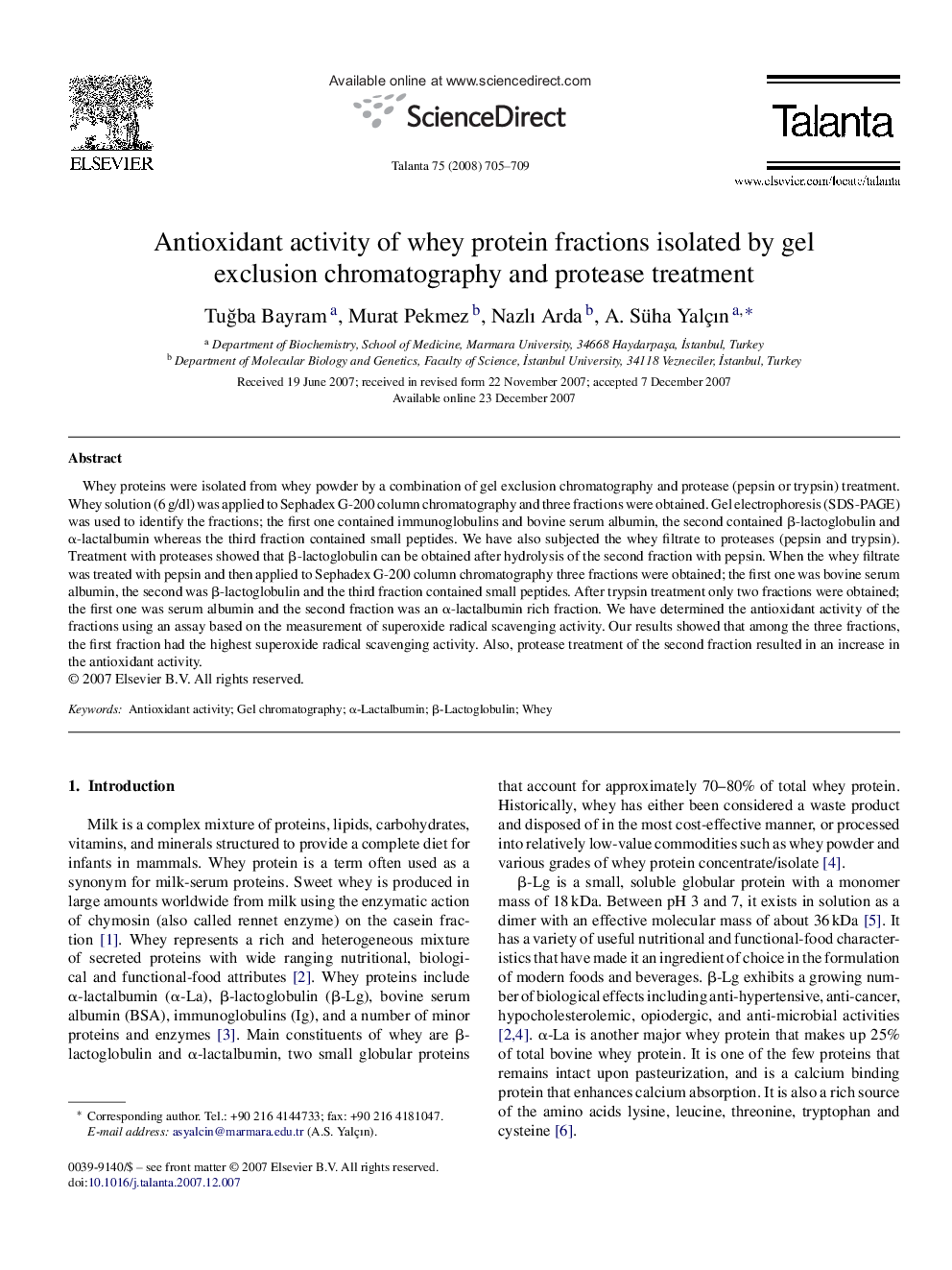| Article ID | Journal | Published Year | Pages | File Type |
|---|---|---|---|---|
| 1245576 | Talanta | 2008 | 5 Pages |
Whey proteins were isolated from whey powder by a combination of gel exclusion chromatography and protease (pepsin or trypsin) treatment. Whey solution (6 g/dl) was applied to Sephadex G-200 column chromatography and three fractions were obtained. Gel electrophoresis (SDS-PAGE) was used to identify the fractions; the first one contained immunoglobulins and bovine serum albumin, the second contained β-lactoglobulin and α-lactalbumin whereas the third fraction contained small peptides. We have also subjected the whey filtrate to proteases (pepsin and trypsin). Treatment with proteases showed that β-lactoglobulin can be obtained after hydrolysis of the second fraction with pepsin. When the whey filtrate was treated with pepsin and then applied to Sephadex G-200 column chromatography three fractions were obtained; the first one was bovine serum albumin, the second was β-lactoglobulin and the third fraction contained small peptides. After trypsin treatment only two fractions were obtained; the first one was serum albumin and the second fraction was an α-lactalbumin rich fraction. We have determined the antioxidant activity of the fractions using an assay based on the measurement of superoxide radical scavenging activity. Our results showed that among the three fractions, the first fraction had the highest superoxide radical scavenging activity. Also, protease treatment of the second fraction resulted in an increase in the antioxidant activity.
